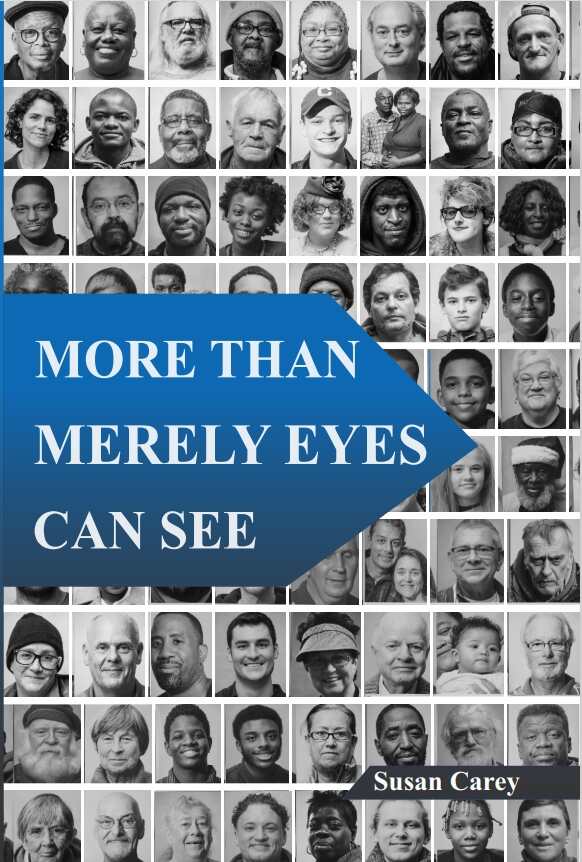More Than Merely Eyes Can See
Written with the belief that listening to the stories of others is a powerful tool for building empathy, More Than Merely Eyes Can See is a thoughtful community project.
Susan Carey’s humane community memoir More Than Merely Eyes Can See celebrates the power of shared storytelling.
Like many older urban churches, Carey writes, Grace Lutheran Church in Hartford, Connecticut, began losing its congregation and its community connection toward the end of the twentieth century. Carey herself joined the church just as its members were reexamining its purpose in the neighborhood. She also became active in its Friday night event, which combined hospitality with celebration, going beyond soup kitchen models to get to know area residents as neighbors. At the events, an amateur photographer took and displayed portraits of the diners and parishioners. Carey herself became integral to the gatherings’ successes when she began collecting the attendees’ personal stories, too, working to “[make] the invisible visible.”
Arguing that storytelling and listening are acts of discovery and empathy, this is a text that celebrates individuality and that eschews labels and judgment. It introduces attendees like James, who was born in Jamaica and dreamed of being a pilot; when Carey met him, he lamented the emotional distance that existed between himself and his daughters. Storytelling helped him to reconnect with them. And after her child was placed in foster care, one woman “sobbed through dinner”; Carey listened to her tale and learned that she sometimes felt unseen: “All the people who walk past you and won’t look at you, who can’t even say hello. It’s like you’re invisible, like you’re not there.”
In transcribing these and other stories in all of their insular detail and preserving the subjects’ vulnerability, the book emphasizes the idea that storytelling makes other people feel more real to their neighbors. Further, historical data and references to the work of experts are used to reinforce such notions of empathy building as crucial to healthy communities. For example, a Harwood Institute study found that Asylum Hill residents (the same community in which Carey was entrenched) wanted places to gather together in their neighborhood to build relationships—a need that the church gatherings worked to meet.
The book’s overarching interview structure somewhat flattens its presentations of individual stories, though. Standardized questions were asked during the interviews; internally, there are standardized descriptions of the subjects as well. These elements compete with the book’s underlying insistence on introducing people as individuals. Still, some of the questions themselves were designed to be open-ended prompts, as with “What brought you to Hartford?”, and do lead to differentiating responses.
A hope-filled, community-centered memoir that suggests that authentic service to others can have a positive impact on one’s own relationships, More Than Merely Eyes Can See allows one church’s dinner guests to tell their stories in their own voices.
Reviewed by
Michele Sharpe
Disclosure: This article is not an endorsement, but a review. The publisher of this book provided free copies of the book and paid a small fee to have their book reviewed by a professional reviewer. Foreword Reviews and Clarion Reviews make no guarantee that the publisher will receive a positive review. Foreword Magazine, Inc. is disclosing this in accordance with the Federal Trade Commission’s 16 CFR, Part 255.

